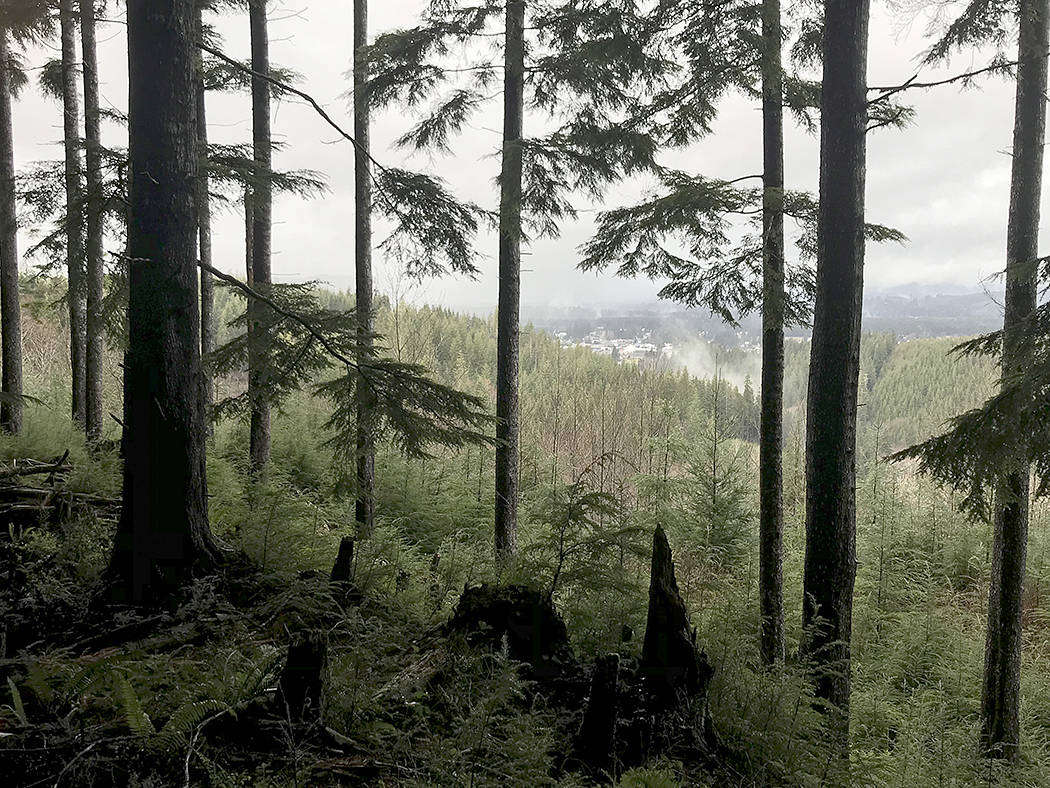By Judy Smith
More than three million visitors come to the Olympic Peninsula every year to see the natural wonders that lie minutes from our door. They spend entire days exploring this amazing vacation destination.
We live minutes from the trails, forests and beaches, but our time seems to be consumed by work, school, laundry, shopping and the other stuff that fills our days. Give yourself permission to take a break and explore our big backyard — the public lands within an hour of Forks.
The morning sky is overcast, but it doesn’t look like rain. The chores can wait. It’s time to put down my cell phone and lace up my hiking boots. My destination today is the Reade Hill Trail. Turn left on the road to the Olympic Natural Resource Center, go up the hill through the yellow gate and the trailhead is on your left. A bulletin board, picnic tables and fire rings are available at the trailhead, courtesy of the Eagle Scouts. Since this is state land, I hang my Discover Pass from my rear view mirror, grab my hiking poles and hit the trail.
The trail begins in the middle of a recent clearcut. Stumps and piles of logging slash will be highly visible along this first segment of trail for the next year or two. However, I’m happy to see robust spruce, Douglas-fir and hemlock seedlings that were planted on a 10-by-10 spacing across the clearing. This is a forest in the process of renewal and I look forward to coming back every year to watch these trees grow up. In addition to the trees, there are fiddlehead ferns unfurling and several early spring wildflowers along the slight uphill grade through the clearcut.
About ¾ mile up the trail, I cross a road and enter second-growth forest. The trail meanders through a mature conifer forest along just off the top of a long ridge, but you can see decomposing stumps from logging 30-40 years ago. Many of these stumps act as a nursery for young tree seedlings.
At one point, the trail passes through a grove of large alder trees with bright white bark. From this part of the ridge, you can hear occasional faint traffic from the highway and an occasional echo of gunfire from the West End Sportsmans Club.
There is a fork in the trail at about 1.6 miles. You can go either way because the upper portion of the trail is a loop around the ridge and Reade Hill. I went to the right both times I hiked this trail, but, next time I might go in the other direction just to see if it’s any easier.
In general, the trail goes up the ridge for 2.2 miles and and down on the return trip, but the trail rises and falls for short pitches in both directions.
After a second road crossing, I see yet another type of forest management. Here the forest has been selectively harvested. Single trees were cut, leaving a robust stand of mature trees. The skid roads are revegetated and barely noticeable.
A few minutes further up the ridge, I walk into a stand of old growth hemlock. The only sounds are bird song and my steps crunching through the carpet of hemlock cones on the trail. My map indicates that this is the summit of Reade Hill. In the few places where sunlight reaches openings on the forest floor there is are thickets of young hemlock saplings.
Before long, I turn the corner and head back down the ridge towards the trailhead. On the return trip there are some nice views of the city of Forks. The trail tread is good and a good portion of it is gravel surfaced. The trail is also dog friendly. The bulletin board specifies that off-leash dogs are okay as long as they are under voice control.
Back at the car, my trail app says I hiked the 4.4 mile route in just under two hours. Clearcut, second growth, selection cut and old growth, the Reade Hill Trail takes you through it all and it’s right in our big backyard.
Judy Smith has been a resident tourist since moving to Forks for her husbands work five years ago. Retired from the federal government, she is an avid hiker, obsessive huckleberry gatherer, writer, proud Army Mom and “Granny Smith.”



